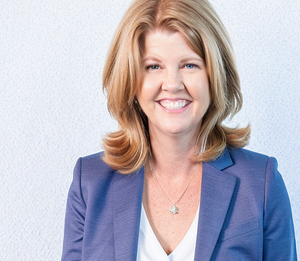Two of the most frequently-asked questions I get are:
1️⃣ Who should I hire next?
2️⃣ How can I find someone who is aligned with the values of my business?
This post answers the first question. (Psst: You can see my answer to the second question here: How to Integrate Your Business Values into Your Hiring – and it includes an outline of my recommending hiring funnel + some swipe files.)
Hiring smartly is on the mind of the CEO of every growing business. The need is usually urgent – and it always feels like the stakes are high to get it right.
But...it can feel especially tricky to get right when you have a small team. When the team is small, everyone – including the CEO – is always wearing multiple hats. And so the question is: which 5 hats do you peel off and make their own position?
Equally tricky in the early days: owners are looking at their bottom line and do not want to get out ahead of the revenue. They definitely feel the need to hire – but when they look around at their cash situation, it doesn't seem particularly perfect for bringing on new headcount.
And so they wonder: Is it now? Is it later? When would it be if it were later? And how can I afford it, if it's now?
Here's how I approach getting to an answer.
The Process I Use to Determine Who to Hire Next in a Growing Business.

1️⃣ First, we get a detailed understanding of the work of the business.
I look at all of the customer deliverables, and all of the work that goes on inside the business — the marketing tasks, the sales pipeline, anything that you're building internally.
Every task and responsibility in the business needs to have a happy home with someone who has the right skillset, the right talent, and the ability to work at the right level of independence.
So we surface all those points – what is happening now in the business, what isn't happening but should be (sometimes that list is just as long!), and then looking ahead: what will be happening in the business if we want to execute on those growth plans you have.
2️⃣ Then we assess the current team.
Of course we look at experience, expertise, responsiveness, accountability, value-for-money – all the usual things.
But there is a critical element that is often overlooked or misunderstood – and yet lives right at the root of any discontent about performance: How comfortable are they with responsibility, with ambiguity, with autonomy? How well can they wade into a novel situation and troubleshoot effectively? Is their expertise in execution – or in creative problem-solving?¹
And: Are they in the right place in the org-chart for what they bring to the table? This is the second half of the "right person, right seat" mantra. When team members wear multiple hats, they are also in multiple places in the org chart and on multiple levels of the org chart – manager, supervisor, implementor – and usually excelling at only one of those levels. Let's find that appropriate level and work to offload what keeps them from doing their best.
When team members wear multiple hats, they are also in multiple places in the org chart and on multiple levels of the org chart – manager, supervisor, implementor – and usually excelling at only one of those levels.
3️⃣ We concentrate on finding efficiencies.
Before we ever think about adding a new team member, we look for ways to be more efficient with the headcount that we already have on the books. For many small-but-growing businesses, this is critical — finding efficiencies can delay a hire for a few crucial months (buying them time to save up some cash for the upcoming hire).
The formula for finding efficiencies is: Building (or improving) systems and systematization, and — where appropriate — creating automation to do the work that humans are doing.
Systemization was likely the last thing on your list when you were focusing on sales and marketing and getting those first clients in the door. And putting it in last place was appropriate. You don't want to invest in systematizing something that is not-yet-repeatable, not-yet-optimized, and changing frequently. If you're only now getting around to systematizing, you're doing it right.
But now that sales are consistent (and growing), you want to make sure that the fulfillment becomes consistent. Finding efficiencies is the gift that keeps on giving, because once you unlock it, it's unlocked for good. Even if you get busier, you're still operating at the more efficient ratio, so you will add headcount slower — and that new staff will be so much more efficient.
So how do you find these efficiencies?
First, systematize and template your work as much as possible. Sometimes when I say this, I get pushback from folks because they feel their work is either super custom, or it's white glove, it's high-end, or they just feel that what they do is resistant to systematizing. Sometimes they even turn up their nose at the idea of a templated fulfillment strategy. But I have found a way to pick the lock on this that doesn't force you into a paint-by-numbers scenario. You do get to give them their custom product, it's just that things are so much more streamlined on the inside. I call this the Chipotle Method — which gives you a big hint — and I'll cover the specifics in a future post. (Reach out if you need help sooner.)
Next, batch work together. Instead of doing a small task every day — try tackling it in bigger blocks two or three times a week. This cuts down on context switching (which is detrimental to efficient work and increases mental fatigue). When you're doing like-with-like, things go faster, you generally perform better, and your brain is happier.
And third, take the time to develop excellent best practices: get clear on how something should be done, and codify it so that everyone's working on the optimized way of getting it done. Don't just document, optimize first, then document.
4️⃣ We identify specific hiring triggers.
Finally, we create a staffing roadmap that identifies specific metrics that would trigger a call to hire new staff. When you approach a specific threshold that we've identified, then you know that it's time to hire that new team member. And the beautiful thing is: these metrics are always closely tied to revenue growth. That means you'll never get out ahead of revenue with your team costs. Both your business and your team (costs) will grow sustainably and they will grow together because they are closely tied to each other.
This 4-step approach helps growing businesses manage their growing team — and staffing costs — in a sustainable, sensible way. Let me know if you have any questions – or would like my support as you work through this exciting stage of business growth.
Footnotes:
- This is the Worketype Assessment™️ – developed by me and used with clients for the last 4+ years. It's an essential tool for designing a lean org chart that is optimized for efficiency and team satisfaction. The assessment measures a team member's ability to work independently when given a higher-order goal, their ability to anticipate problems, and their ability to perform detailed work steadily and repeatedly without fatigue. If this interests you, please reach out.
Thank you for reading! Let me know what you think of it.








Member discussion